A dashi packet is a great alternative to making dashi (Japanese soup stock). It’s really convenient and produces a much more flavorful soup stock than one made with dashi powder.
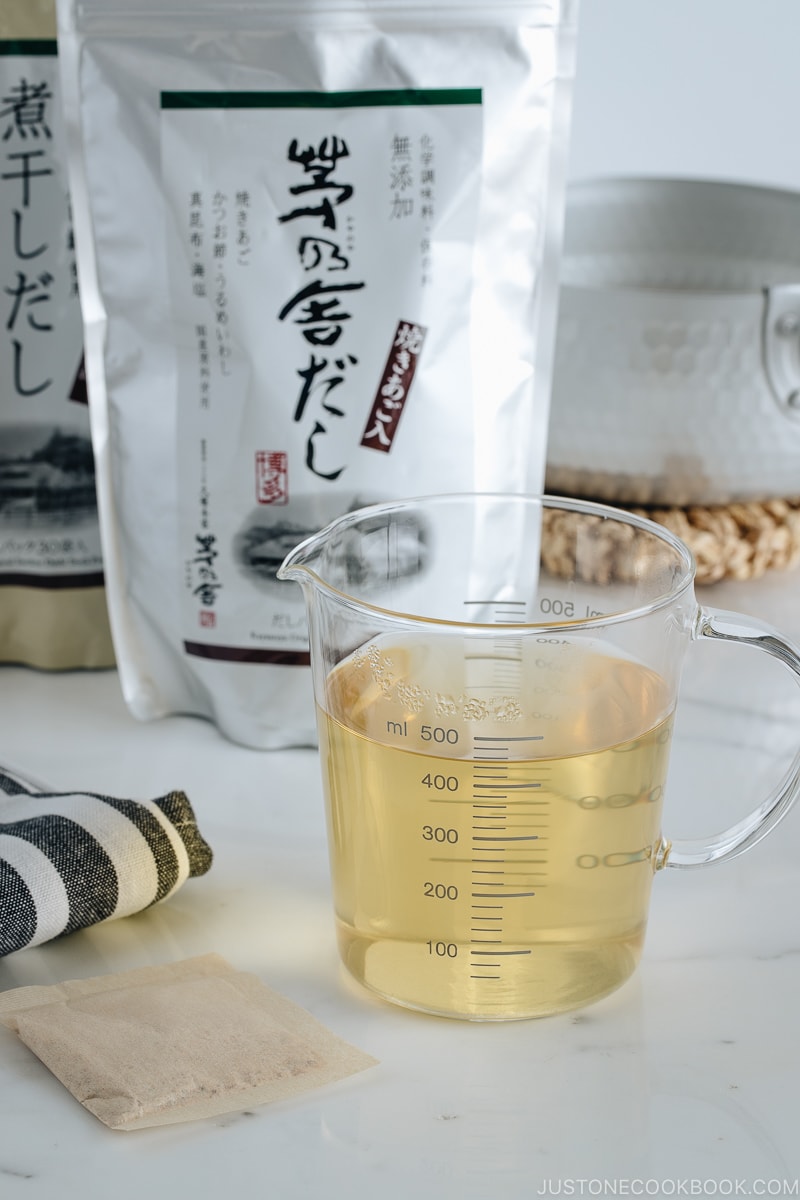
One of the most convenient ways of making delicious dashi for your miso soup and other Japanese dishes is using dashi packet (だしパック). These little pouches work just like tea bags; you simply need to mix them with water, let the flavor steep and infuse, and you’ll have flavorful dashi soup stock instantly! They are reasonably affordable and save so much time in the kitchen.
In this post, I will share my favorite dashi packet and how to use it.
The Dashi Packet I Love
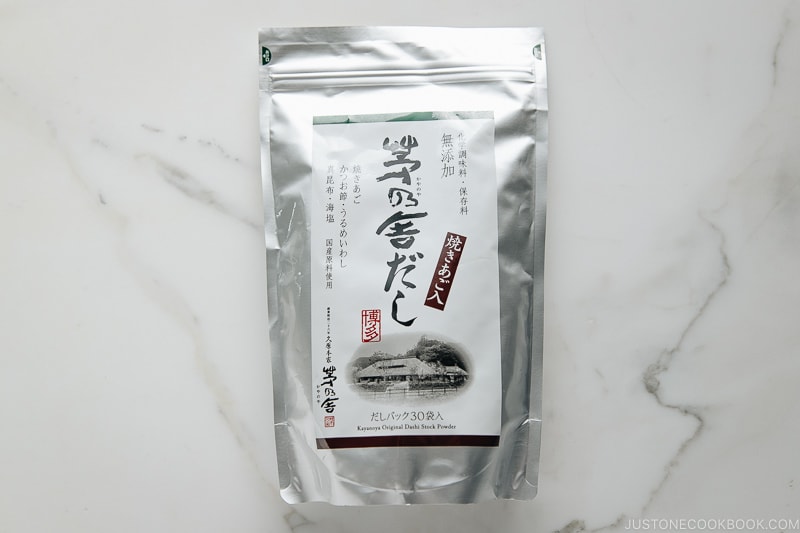
After trying a handful of dashi packet brands, I believe Kayanoya Dashi has the best flavors among them.
This dashi packet includes flying fish (Yakiago, Tobiuo), bonito flakes (katsuobushi), Pacific round herring (Urume Iwashi), kelp (Ma Kombu; see different types of kombu in this post), and sea salt.
One bag of Kayanoya Dashi contains 30 packets ($3.81/oz). If you make miso soup with a dashi packet, you can make roughly 60 miso soup bowls. By the way, it is cheaper than a carton of chicken stock!
Kayanoya Dashi is available in the U.S. and you can purchase their dashi on Amazon or from your local Japanese grocery stores (I get mine from Nijiya). Kayanoya also carries different types of dashi, including low-sodium dashi and vegetable dashi.
Kayanoya says on their website: Our products contain no additives including artificial flavors and preservatives. Chemically-made MSG (sodium glutamate) is not added to the product during the manufacturing process, but we have not tested whether naturally-derived MSG is mixed in, so we do not advertise our products as “no MSG”. In addition, powder floats in the air during manufacturing and packaging processes, and naturally-derived MSG can generate. Therefore, we cannot guarantee that naturally-derived MSG is not mixed in.
Other Dashi Packets
Dashi packets are more easily accessible these days. You can get a few different brands of dashi packets on Amazon.
- Yamasan Japanese Umami Dashi Soup Stock Mix (15 packets; $4.29/oz)
- HYOSHIRO Original Dashi Stock (30 packets; $3.68/oz)
- Maekawa Natural Soup Stock Packet (28 packets; $0.60/oz)
- Yamaki Dashi Packet (no longer available on Amazon; April 2024)—I used to use this brand when Kayanoya Dashi wasn’t available in my local Japanese grocery stores.
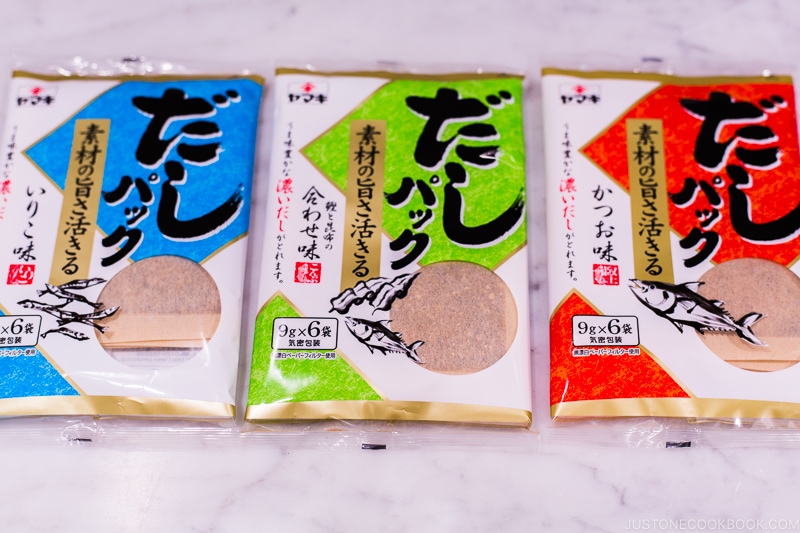
Recipes Using Dashi
The majority of Japanese recipes require dashi to add authentic umami-rich savory flavors and here are some examples.
- Miso Soup
- Beef Udon
- Oyakodon (Chicken and Egg Rice Bowl)
- Tamagoyaki (Rolled Omelette)
- Shrimp Tempura
The Ultimate Dashi Guide
Dashi plays an important role as a flavor enhancer in Japanese cooking, so food is not seasoned with too much salt, fat, or sugar. Rich in minerals and other vitamins, dashi is considered a healthy ingredient in our daily diet.
In Japanese cooking, there are six different types of dashi, including vegetarian and vegan dashi (*).
- Awase Dashi – a stock made from a combination of dried kelp + bonito flakes
- Kombu Dashi * – a stock made from dried kelp
- Katsuo Dashi – a stock made from dried bonito flakes
- Iriko Dashi – a stock made from dried anchovies/sardines
- Shiitake Dashi * – a stock made from dried shiitake mushrooms
- Vegan Dashi * – a stock made from dried shiitake mushrooms and kombu
If you are new to different types of dashi, check out my Ultimate Dashi Guide.
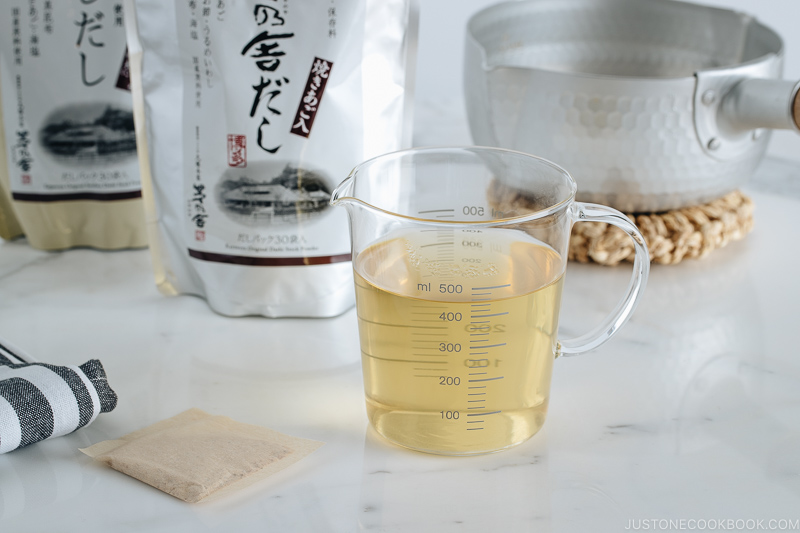
Wish to learn more about Japanese cooking? Sign up for our free newsletter to receive cooking tips & recipe updates! And stay in touch with me on Facebook, Pinterest, YouTube, and Instagram.
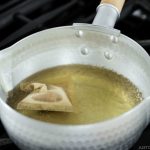
How to Make Japanese Soup Stock with Dashi Packet
Video
Ingredients
- 2 cups water
- 1 dashi packet (9 g)
Instructions
- To a medium saucepan, add 2 cups water and 1 dashi packet.

- Start cooking over medium heat and bring it to a boil. Once boiling, shake the bag a few times to release more flavor from the bag. Reduce the heat to medium low and simmer for 2–3 minutes.
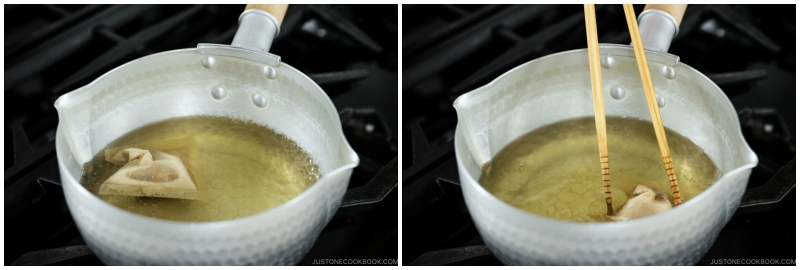
- Discard the packet. The dashi is ready to use.
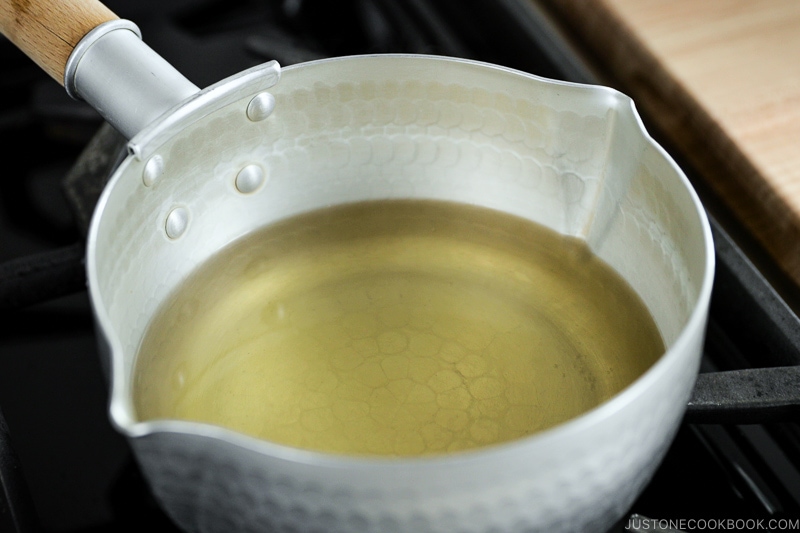
To Store
- You can keep the dashi in the refrigerator for up to 3–4 days. I don‘t recommend to freeze dashi made with dashi packet.
Editor’s Note: This post was originally published on June 7, 2016. The original video was replaced with the new video using updated clips on April 26, 2024.
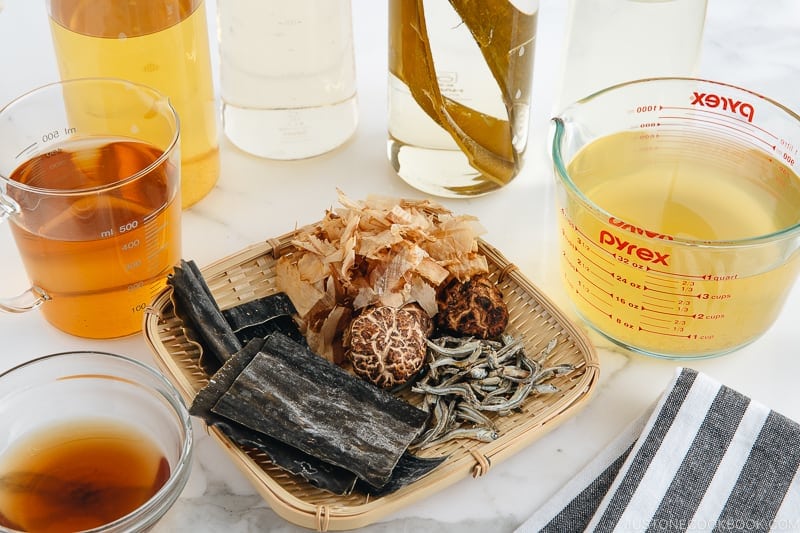
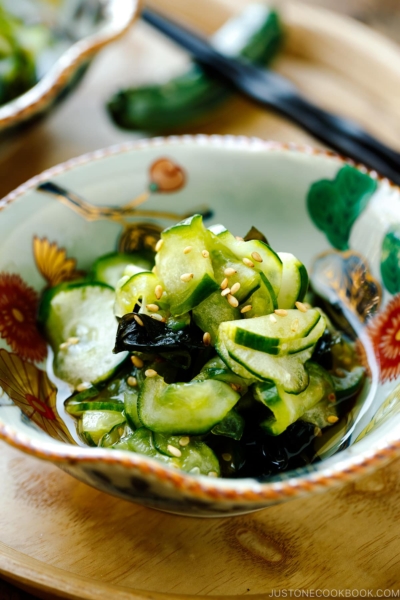
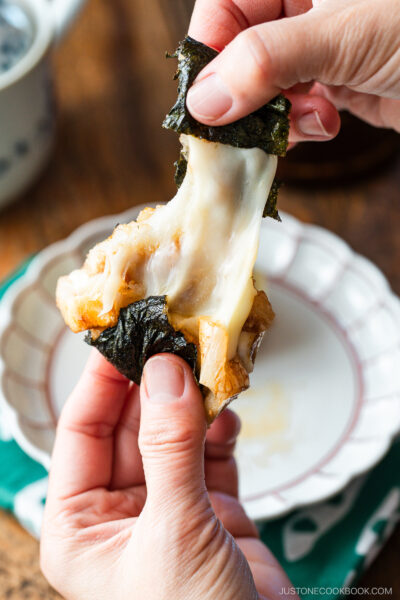
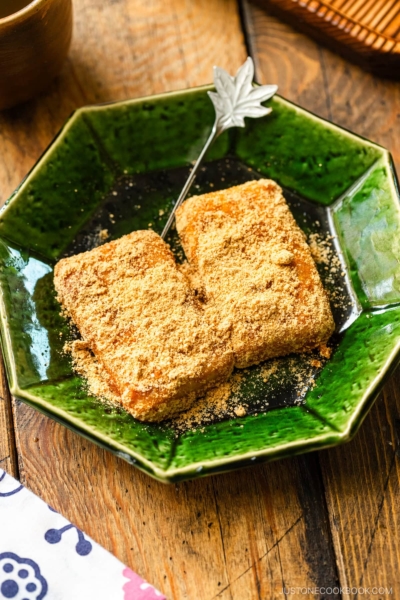
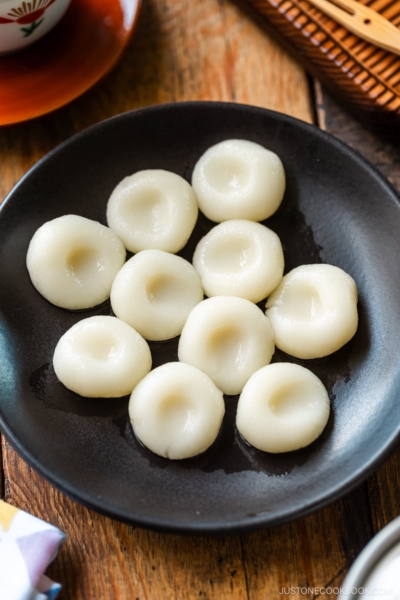




I started using the Kayanoya dashi pouches on your recommendation a couple of years ago after trying 5 other brands and making simple dashi from scratch. The Kayanoya is so clearly superior and a great value, too. Thanks for this recommendation as it adds credibility to your other recommendations!
Hi John, Thank you so much for your kind feedback.
We are so happy to hear you enjoyed Kayanoya Dashi as much as we do! 🤗
I love dashi after discovering it on this website. I’ve made dashi with konbu and bonito but I also appreciate the instant soup alternatives when I don’t have time to make the better version. Recently I roasted some winter root vegetables and then stir fried with leftover rice and dashi powder to enjoy a quick, mild umami filled dinner. Perfect for the new year when I want something hearty and soothing.
Hello, Michelle! Your dish looks delicious! Thank you for sharing the photo and your experiences.
We’re so glad to hear that our website helped you discover how to make delicious dashi. It means a lot to Nami and the team. Happy cooking!
Hi, is Kaneshichi dashi packet as good as Kayanoya dashi packet?
Hi, Mac! Thank you for reading Nami’s post.
Yes. It would also make a good dashi. We hope you enjoy cooking a variety of dishes!
You say 1 dashi packet can make 60 bowls of miso soup? But its 400ml water = 2 cup water. How do you make 60 bowls? How many ml or cup per bowl?
Hi, Odelia! Thank you for trying Nami’s recipe.
Miso soup is typically one cup. There are 30 packets in the bag, which makes approximately 60 bowls. We hope this helps!
Do you have any suggestions for gluten free dashi stock powder?
Hi, Kari. We looked into gluten-free dashi stock, but most contain small amounts of gluten. Making Dashi from scratch with Kombu, Katsuobushi, or Shiitake mushrooms is the better option.
https://www.justonecookbook.com/how-to-make-dashi-jiru/
Hi! I bought the kayanoya packets as you recommended. However on the instructions on the back of the bag it also provides an option to cut the packet and mix the materials with water. That is much easier than someone like me that doesn’t feel like boiling water 🙂 what is the use case for that method vs the “steeping” method you outlined here? Thanks!
Hello, Ivy. Thank you for reading Nami’s post.
If you’re making Dashi stock, both methods must simmer for a few minutes to produce umami. Both ways result in wonderful Dashi stock. However, if you tear the packet and use the Dashi powder, the broth will not be clear because it will not have a filter, and you may notice a ground powder texture in the soup. Here is the Kayanoya web page where you may learn more about it. I hope this helps!
https://usa.kayanoya.com/collections/dashi/products/kayanoya-original-dashi-stock-powder-8g-30-packets
The second ingredient is maltodextrin. Is this ok or just MSG?
Hi, Jai! Thank you for reading Nami’s post.
Maltodextrin is a starch that can be found in a wide variety of foods.
For more information on Kayanoya products, please visit this website.🤗
https://www.kayanoya.com/en/products/